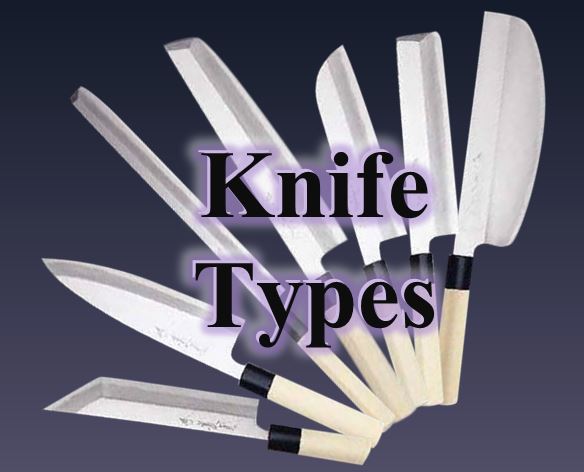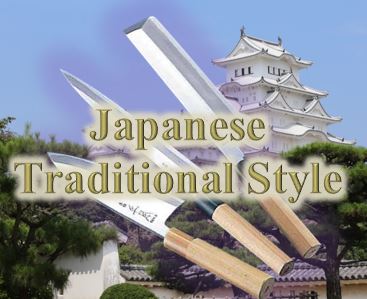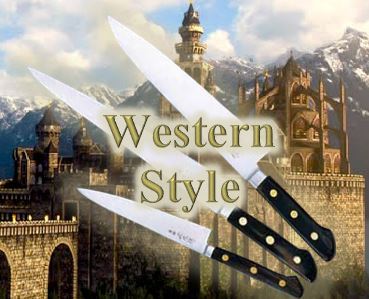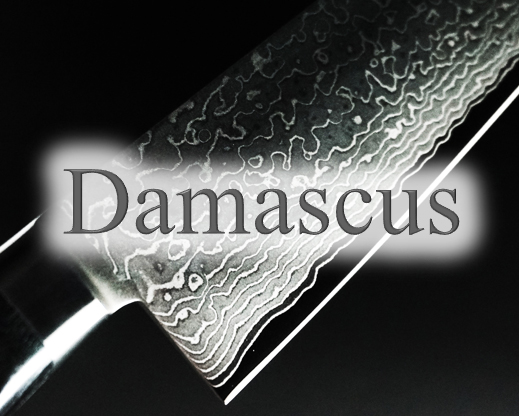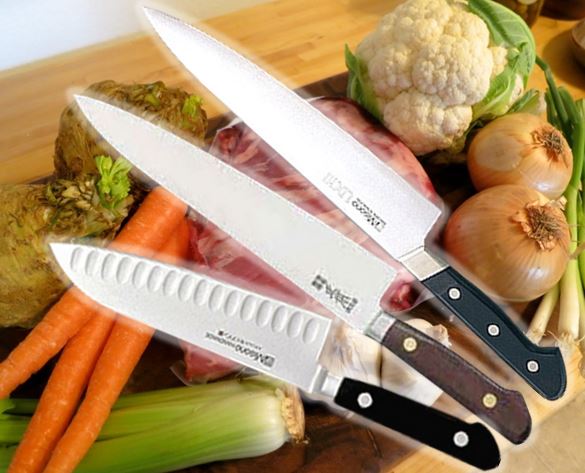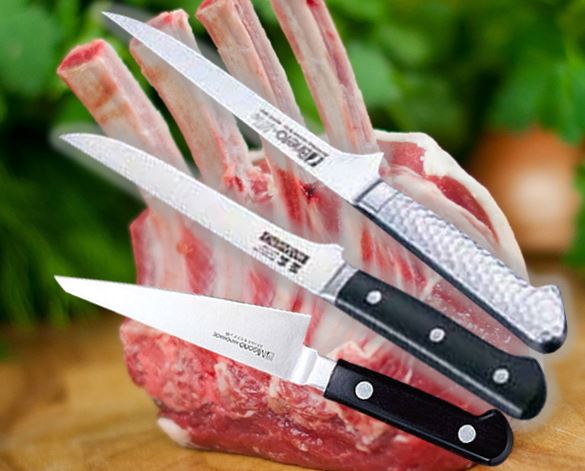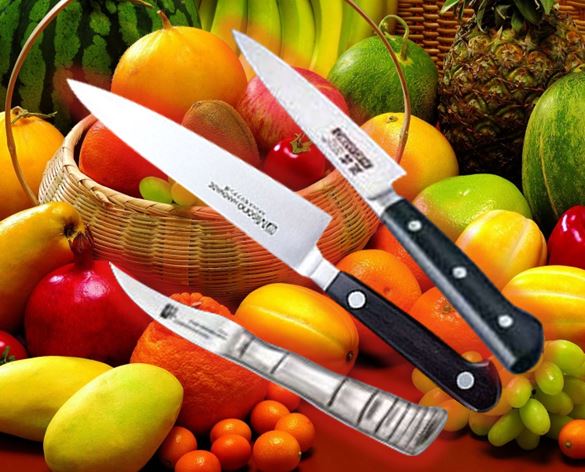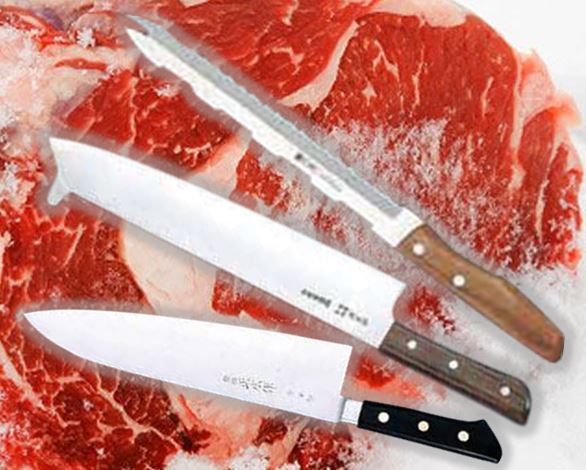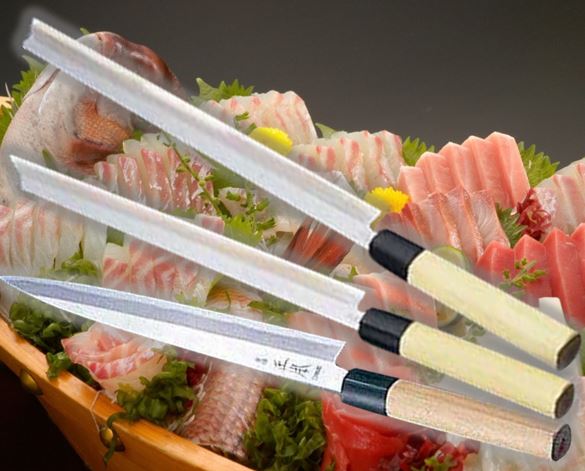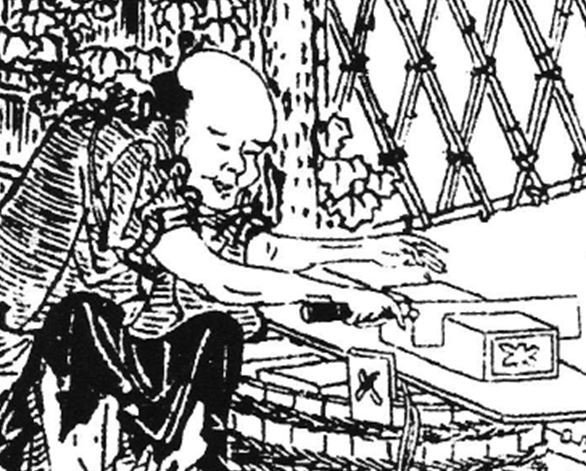Knife Purposes & Types
(1) Select the way to reach your best knife
What are you looking for? Please click one of the following pictures to approach your preference.
The most important to be clear is thought what purpose and type you expect to your future knife.
And then, start finding the best one for you. This page may help you closely.
In addition, the search engine at the upper right corner of this page will support you (that has a good advanced search function.)
Basically, the price range is likely to reflect the value of quality, material, structure, aesthetic as well as brand.
That's why it is not easy for some customers to finally decide what to purchase, we understand.
Please feel free to contact us if you have any question.
(2) Purposes of Kitchen Knives
(3) Types of Kitchen Knives
| Style | Purpose | Blade Type | Details |
| Western Style Knives | Multi Purpose | Gyuto (Chefs knife) |
Versatile cooking knife for cutting up, filleting and preparing meat and fish. Slim blades for intricate tasks, pull or push cuts. Most standard and popular blade among Western Style knives, so called “Chefs Knife”. Gyuto is one of the most versatile blade type, suitable design for cutting, slicing meats, vegetables and fishes. |
Santoku (All-Purpose knife) |
All-round knife for meat, fish and vegetables (Santoku = the three virtues). Wider and rounded shape is suitable design for especially vegetables, but also cutting, slicing well for the fishes, meats. Santoku knife is popular knife and can be recommended as Multi Purpose Home Chef knife. The Santoku is sometimes called "Bunka" Bocho. | ||
| Slicing & Carving | Sujihiki/ Slicer/ Carving knife |
"Sujihiki" or Slicer (or Carving knife, depending on the purpose and detailed shape) has narrower and longer blade. The Sujihiki is suitable design for the slicing tasks. If you often cut and slice (fillet) fishes, meats, hams etc, Sujihiki is the best choice for your needs. | |
| Salmon (Salmon and Meat Slicer) |
For slicing smoked salmon, meat and ham. This type of knife has a lot of dimples on the side of the blade to prevent piece of salmon from being adhered. | ||
| Wave knife (Bread Slicer) |
The Bread Slicer is often called "Wave knife" that has of course a lot of wave patterns at the edge of the blade. It is suitable for cutting bread, cakes, and sponge cakes. | ||
| Boning | Boning knife |
The typical type of western boning knife that has a sharp point & narrow blade, that is used in food preparation for removing bones of poultry, meat, and fish. | |
Honesuki (Sabaki) |
Honesuki or Sabaki has a suitable design for de-boning process, cutting a Chicken, filleting a fish. Versatile knife for special purpose. There are two type of Honesuki--- Kaku (square) and Maru (Saki-maru or round). | ||
| Thicker and longer than Honesuki. Generally used for butchering poultry. | |||
| Paring & Peeling (fruit) | Petty (Utility knife) |
Small all-purpose knife for fruit, peeling and cutting small objects. Compact, good handling of Petty knife is suitable design for peeling fruits, preparing various kinds of foods and precise works. | |
| Paring Peeling knife |
Small and compact size. The Paring knife is suitable design for peeling, cutting fruits and vegetables. Tiny and cute looks, yet very useful knife. | ||
| Frozen Food | Frozen Food knife (Reito) |
Designed to cut frozen food. Sometimes called "Reito" in Japanese. Common type of the Frozen Food knife has a sturdy blade with a coarse, saw-toothed edge. Another type of the Frozen is like a sturdy, thick and large chef knife with no saw-toothed edge for semi-frozen food. | |
| Cleaving & Chopping | Cleaver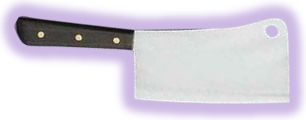 |
Large knife, that varies in its shape but usually resembles a rectangular-bladed hatchet. Largely used as a kitchen or butcher knife intended for hacking through bone. The knife's broad side can also be used for crushing in food preparation. | |
Chinese Cooking knife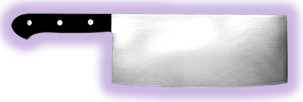 |
The Chinese Cooking knife is the rectangular-bladed, all-purpose knife traditionally used in China, and many other Asian countries to prepare a variety of meats, fish, and vegetables. After the world war II, made-in-Japan knife began to surface in Japan and recently in Asian countries. | ||
| Fish Slaughtering | Western Deba (Yo-Deba) |
Western Deba or Yo-Deba is the Western-style version of the traditional Japanese deba. The edge is generally double-edged. The Western Deba has heavier weight and more durable edge, designed for harder use --- for cutting a fish, chicken and shrimps, lobsters. | |
| Japanese Style Knives | Deba |
The "Deba" is designed for cutting fish and light mincing. The back of the blade can be used to chop thin bones. Thick and Heavier blade of Deba has good durable edge, suitable for cutting a Fish, a Chicken, also for filleting tasks. Its history goes back to the Edo era in Sakai, Japan. | |
| Ai-Deba / Mioroshi-Deba |
The "Ai-Deba" is slightly narrower and thinner than a traditional deba, a heavy knife that was made to filet and butcher whole fish. "Mioroshi"Deba is more narrower than Ai-Deba. (Width : Deba > Ai-Deba > Mioroshi-Deba > Yahagiba) | ||
Funayuki Deba |
A filet knife, a multi-purpose Japanese traditional one. The name "Funayuki" or "Going on a boat" in Japanese. The profile is similar to a Deba, but is thicker than Deba to meet multi-purpose on a boat. This lightweight knife is easy to use on smaller fish. | ||
| Sashimi & Sushi Slicing | Yanagiba (Sashimi) |
A Sashimi Knife, for cutting and filleting fish or ham with a pull stroke. Slim blade in the shape of a willow leaf or Katana (sword). Long and Narrower blade is suitable for slicing tasks. Especially for preparing fresh, good&beautiful shape of raw fishes (sashimi). The Yanagiba is called "Shobu" and popular in Western Japan (around Osaka and Kyoto). | |
| Takohiki (Sashimi) |
Square shape, longer blade of Sashimi Knife, designed for same purpose as Yanagiba. Not for slicing "Tako" (Octopus) but for making Sashimi. The edge line is almost straight, while Yanagiba knife's blade edge line is more curved towards the blade tip. The Takohiki was popular in Eastern Japan (around Tokyo). | ||
| Fuguhiki (Sashimi) |
A Sashimi knife for a specific purpose, originally designed for cutting and slicing Tessa (Blowfish Sashimi). Its blade shape is similar to Yanagiba, but is narrower and thinner than that of Yanagiba. It is suitable design for thinner cutting, slicing tasks for higher-level professional chefs. | ||
Sushi-Kiri |
"Sushi Kiri" means slicing Sushi in Japanese. It is for slicing roll sushi and Hako Sushi (Battera Sushi). It is popular in Western Japan (around Osaka and Kyoto). Around Tokyo area, Yanagiba or Takohiki are used for cutting roll sushi. | ||
| Vegetable Cutting | Usuba (Vegetable knife) |
The Usuba has a thin & straight blade for clean cutting on the chopping board; paper-thin slices are no problem, even with ripe tomatoes. Wide blade for good guidance along the finger knuckles. It has been used by professional chefs in Eastern Japan (around Tokyo). | |
Kamagata-Usuba (Vegetable knife) |
It is another type of Usuba with a round back as well as with a thin & straight blade. That has been used by professional chefs in Kansai, Japan (around Osaka and Kyoto). The small types are used for chamfering vegetables. | ||
Nakiri (Vegetable knife) |
The Nakiri has a very thin & straight blade. Long time ago before Santoku grew popular, the Nakiri was generally used as a common kitchen knife mainly for home use. | ||
| Others | Unagi-Saki  |
The Unagi-Saki is a knife for cutting eel. There are generally three or four different types in shape --- Kanto, Osaka, Kyoto and Nagoya types of blades. | |
| Tuna-Kiri |
una Kiri or Maguro Bocho in Japanese is an extremely long & specialized Japanese knife to cut and fillet giant tuna. Its blade is usually 50cm to 90cm long. The shape is similar to takohiki. | ||
| Other Types | (containing Western & Japanese Style different knives) Tomato knife, Steak knife, Proty knife, Sole knife, Hamo-Kiri, Kai-Saki, etc. |
(4) Steel Qualities (Materials) >> Go to the Next Page


